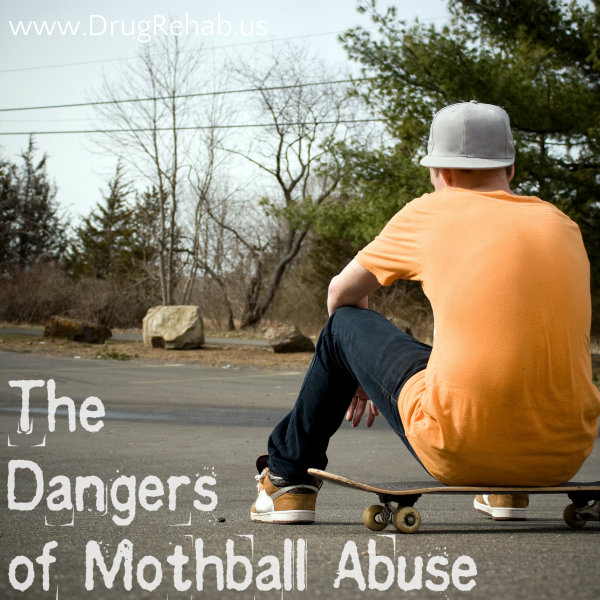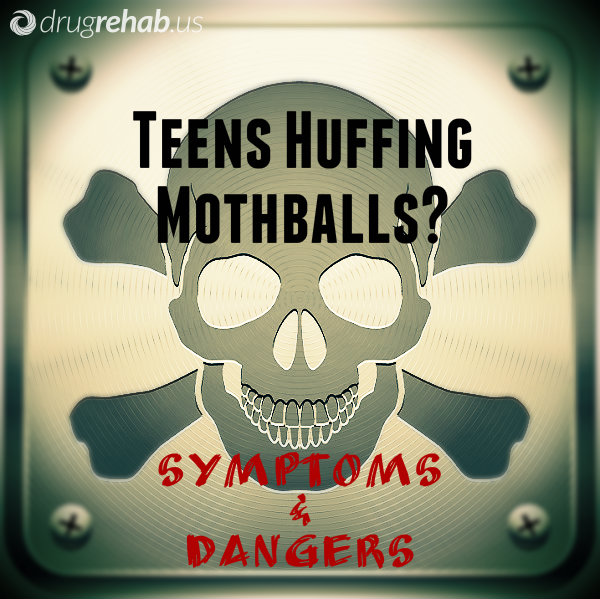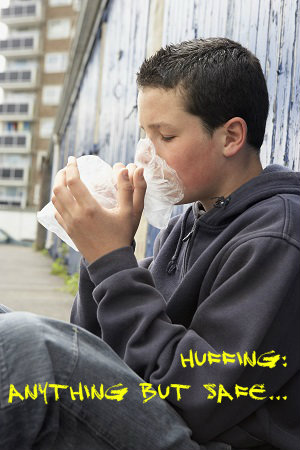01 Jun 2015
The Dangers Of Mothball Abuse
Substance use and abuse among teens and young adults often includes the huffing of inhalants. This is a practice that adults might engage in as well, but it is more common in young people because of access. Many household chemicals can be used for huffing, which is the practice of inhaling fumes to get high. Young people turn to huffing because it is an easy high. One substance in your home you might not suspect could be used in this way may be in your closet. Mothballs can be used to get high and, as silly as it sounds, the dangers are not insignificant.
What Is Mothball Abuse?
 Huffing means capturing and inhaling the fumes of certain chemicals in pursuit of a high. Many products and chemicals can be used for this purpose, ranging from Freon in air conditioning units to the gases in a can of whipped cream. People who abuse mothballs typically put them in a paper bag and breathe into it for several minutes. Mothballs are traditionally made with a volatile chemical called naphthalene, but newer products use a dichlorobenzene instead, as it is less flammable. Either chemical can be huffed for a high.
Huffing means capturing and inhaling the fumes of certain chemicals in pursuit of a high. Many products and chemicals can be used for this purpose, ranging from Freon in air conditioning units to the gases in a can of whipped cream. People who abuse mothballs typically put them in a paper bag and breathe into it for several minutes. Mothballs are traditionally made with a volatile chemical called naphthalene, but newer products use a dichlorobenzene instead, as it is less flammable. Either chemical can be huffed for a high.
Mothballs And Addiction
Mothball abuse may not sound as serious as something like cocaine abuse, but inhalant abuse can be dangerous and fatal. Users can even get addicted to the high that comes with huffing. Research on addiction to mothballs, naphthalene or dichlorobenzene is limited, but we do know that inhalant use can lead to addiction. Like any drug of abuse, inhalants cause the user to get high or experience a pleasurable sensation. With time and frequent use, the brain changes in response to this high, and quitting becomes more and more difficult. Eventually the user is hooked.
Is Napthalene Addiction Dangerous For Health?
Becoming addicted to naphthalene is extremely dangerous. Even if someone doesn’t get addicted, just using this substance recreationally is risky. Both naphthalene and dichlorobenzene are harmful, toxic substances. This is why moths stay away from mothballs. When someone inhales the fumes from mothballs, he will lose coordination, develop slurred speech, become weak in the limbs, get headaches, feel nauseated and vomit. Some users may even get a scaly skin rash.
These are short-term side effects of getting high on mothballs. The long-term health effects of inhaling these substances include kidney and liver failure, anemia, convulsions, seizures and coma. Death is also possible when huffing, no matter what substance is being used. Huffing can even be fatal on the first try because the user is cutting off oxygen supply when inhaling another substance.
The dangers of abusing mothballs are numerous and serious. If you have a teenager, make sure he knows that this habit, which may seem like harmless fun, is actually quite dangerous. If you use mothballs, make sure they are locked away to prevent access. Huffing is common among teens and an issue of which all parents should be aware.
Concerned Your Teen Is Abusing Drugs?
Call An Elements Behavioral Health Counselor Now!
16 Apr 2015
Yes, People Really Do Get High On Mothballs
It sounds ridiculous, but it’s true: there is such a thing as mothball abuse. It’s mostly abused by teens, which are at the right age for trying stupid things. As silly as it seems to be sniffing the fumes coming from mothballs, the risks and the dangers are real and serious.
Teens that engage in this behavior are at risk for some pretty worrying health problems. If you have a teenager at home and mothballs in the closet, bring up the issue and make sure the consequences of abusing this household product are serious.
The Mothball High
 Teens are famous for coming up with new and inventive ways to get high. These strategies typically involve some household product because access is easy. Huffing is a common way for teens to get high, and most parents don’t even think about it. Huffing refers to the practice of inhaling fumes from a household product in order to get high. The list of inhalants used is long and includes paint, nail polish remover, hairspray, scented markers, correction fluid and even mothballs.
Teens are famous for coming up with new and inventive ways to get high. These strategies typically involve some household product because access is easy. Huffing is a common way for teens to get high, and most parents don’t even think about it. Huffing refers to the practice of inhaling fumes from a household product in order to get high. The list of inhalants used is long and includes paint, nail polish remover, hairspray, scented markers, correction fluid and even mothballs.
Mothballs are solid balls that give off an odor that deters moths. They protect your clothes from the insect. The odor comes from a substance in the mothball that turns from a solid into a gas that can be inhaled. Teens sniff mothballs like a drug to get high. The substance that gives them this high is either naphthalene or dichlorobenzene. Older mothballs tend to contain the former, while newer products have the latter. Both can get you high and are harmful to inhale.
Is Napthalene Addiction Dangerous For Health?
Huffing mothballs is dangerous. Most teens won’t do it often enough to get addicted, but addiction is possible. What is more likely is that teens inhaling the fumes will experience health problems.
Symptoms Of Inhaling Mothballs
The most common and immediate symptoms of inhaling mothballs include the following:
- lightheadedness and dizziness
- nausea
- vomiting
- stomach pains
- headaches
- eye and airway irritation
- slurred speech
- loss of coordination
- mental impairment
- weakness in the limbs
- scaly skin rash
Long-term Consequences Of Mothball Abuse
There are also some very serious long-term consequences of mothball abuse. Teens who huff mothballs several times put themselves at risk for excessive:
- weight loss
- anemia
- liver failure
- kidney failure
- and even seizures and coma
The effects of abusing mothballs with naphthalene are similar to those with dichlorobenzene. Dichlorobenzene is less toxic than naphthalene, which is why newer mothballs are made with it, but it can still cause the same symptoms and the same lasting damage to the body.
Talk To Your Teen About Mothball Huffing…NOW!
Mothballs made the news several years ago when teenagers in France were hospitalized for huffing them. The twin sisters were seriously impacted by their drug habit and one of the two needed a full six months to recover.
While cases like these bring exposure to a dangerous practice like mothball huffing, the story disappears before long and people forget.
Be aware that your teen might experiment with mothballs. Talk to your teen about the dangers and help him understand the risk of engaging in this serious type of drug abuse.
10 Sep 2013
Huffing: A Dangerous Trend For Teens
Alcohol, street drugs, prescription drugs and over-the-counter medications are not the only way kids are getting high and it is imperative that parents become aware. Teens are “huffing” all sorts of common household items in order to get a fast buzz.
 Teens and preteens looking for a cheap high are willing to experiment with breathing in powerful household products like nail polish remover, hair spray, aerosol deodorants, computer cleaner, correction fluid and even aerosol from whip cream canisters. These and other toxic substances are found in nearly every room in American homes. The problem is that many parents, like their young teens, fail to recognize the dangers. A single attempt at huffing has been enough to kill some youth.
Teens and preteens looking for a cheap high are willing to experiment with breathing in powerful household products like nail polish remover, hair spray, aerosol deodorants, computer cleaner, correction fluid and even aerosol from whip cream canisters. These and other toxic substances are found in nearly every room in American homes. The problem is that many parents, like their young teens, fail to recognize the dangers. A single attempt at huffing has been enough to kill some youth.
Huffing is also called dusting or sniffing. Kids trap the toxic chemicals in a small plastic bag which they then hold up to their face before inhaling deeply. This gives them a five to 10 second rush or high. Teens inhale magic markers, household paint, Freon from air-conditioners and refill cartridges for butane lighters.
Dangerously False “Safer” Perception
In recent years there has been a trend among teens away from illegal street drugs towards substances that teens consider more ‘safe.’ Prescription and over-the-counter medications became more widely used for a time until cost and safety measures made them hard to come by. Now inhalants are popular. Not only do these products seem harmless to teens, they are also inexpensive and easy to obtain. Most of the time teens can simply help themselves to something already on the shelf at home. If not, no one will question them when they buy these things at the store.
The truth is that these products are safe when used for their intended purposes and according to their package directions. They are anything but safe when inhaled in order to get high. At best, repeated exposure will injure vital organs (kidneys, liver, lungs, heart and brain). At worst, kids can experience heart attack – referred to as Sudden Sniffing Death Syndrome – or suffocation. Parents who had no idea their child was huffing have gone into their child’s room to find them dead on the floor with a bottle of computer cleaner still clenched in their fingers.
Parents should talk with their teens and even preteens about the dangers of breathing in toxic fumes and chemicals. Kids are huffing even in elementary school, so it isn’t a discussion that needs to wait for high school – it can happen while using these household items or it can be part of a sit-down conversation about drug use in general. Tell your kids that while a product can be safe to use it can still be poisonous. Poison is an important adjective since it communicates just how serious these substances really are.
Parents Can Also Keep Their Eyes Open To Signs Of Huffing, Including:
- Finding plastic bags with a chemical odor to them
- Aerosol products or strong chemical items disappearing entirely or running out quickly
- Teens having the smell of chemicals on their breath
- Symptoms of intoxication, such as red and watery eyes, slurred speech or dazed appearances
- Paint, correction fluid or magic marker stains on their face
- Household products being out of place or perhaps even in the teen’s room.
The best defense is a strong offense, so talk with kids about what their friends might be doing. Talk about why kids might be looking to get high. If your child is huffing regularly, get professional help. Huffing can be addictive in the same way as drugs or alcohol, and kids won’t know which sniff could be their last.
17 Apr 2013
‘Huffing’ a Growing Problem in Adults
Huffing. Sniffing. Bagging. No matter what it’s called, inhalant abuse is an ongoing problem in the adolescent population. Unfortunately, increasing evidence shows that adults are latching onto this dangerous form of substance abuse as well. If you suspect an adult you love is abusing inhalants, it’s critical to learn more about this dangerous habit and get him or her into drug rehab treatment.
Adults now make up more than half of the patients being admitted to treatment for inhalant abuse, according to a survey by the Substance Abuse and Mental Health Services Administration. It’s not just young adults either. The survey revealed that 32% of the admitted adults were between the ages of 32 and 44 while 16% were older than 45. Overall, an estimated 1.1 million adults abused inhalants in the last year .
Inhalants are attractive to drug users for several reasons. Because the chemicals are found in household products, they’re easy to find. There’s no need to visit a shady part of town to buy them. Inhalants are also inexpensive, making them an accessible substance for people of any economic status.
Inhalants are Toxic Chemicals
While all abused substances carry potential risks, inhalants are particularly dangerous. Inhalants are breathable chemicals found in many everyday products, from furniture polish to computer cleaner sprays. Other commonly available inhalants include whipped cream aerosol cans, vegetable oil sprays, varnish removers, paint thinners, correction fluids, and felt tip markers. When used as intended, we don’t feel the effects of the chemicals inside the products.
However, when the products are abused, they create a high. Inhalants are usually taken directly into the lungs by breathing in the chemical through the nose or mouth directly from the container or from a bag filled with the chemical. Some users will inhale directly from a cloth soaked in the chemical. The high produces hallucinations and feelings of euphoria. Addicts may also use nitrite-based products, like leather cleaners or room deodorizers, because they believe the chemicals enhance sexual pleasure.
In addition to triggering the high, inhalants also deliver toxic chemicals to the body. The inhalant works by displacing the air inside the lungs, a process called hypoxia. Deeply breathing the vapors delivers chemicals in doses hundreds of times greater than the maximum allowed in industrial settings.
Risks of Inhalant Use
The risks include loss of coordination and inhibition as well as dangerous hallucinations and delusions. Life-threatening risks include suffocation due to the displacement of oxygen in the lungs, to heart failure from the loss of proper heart rhythm. Inhalants have also been linked to liver and kidney damage.
Brain cells are especially vulnerable to the abuse, which is why inhalants have such a profound impact on functions like memory, learning new things, and even carrying on a conversation. Inhalant use may cause permanent brain damage and death—these can happen any time a person huffs, even the first time. Users face the risk of an overdose every time they abuse the substance, making drug rehab that much more critical.
Signs of Inhalant Abuse in Adults
- Chemical odors on breath or clothing
- Hidden containers of inhalant products
- Slurred speech
- Fatigue
- Weight loss
- Hostility
- Paranoia
- Poor concentration
- Confusion
- Poor hygiene
Inhalant Abuse Treatment
This is a serious problem that requires immediate and professional treatment. Because of the risk of devastating and life-threatening consequences, there is no time to wait to see if the person will stop on his or her own. Consider using a professional interventionist to get the addict into treatment as soon as possible.
Not every drug rehab treatment center has the resources to treat inhalant abuse, so it may take several tries to find a qualified facility. To be effective, treatment must be within an inpatient setting. Detoxification is necessary, and, because the chemicals are so pervasive, that process will take several weeks. Withdrawal symptoms are common and may include hallucinations, nervousness, muscle pain, psychosis, insomnia, seizures and aggression. A medical staff will monitor the addict and provide medications to relieve symptoms and address complications.
Long-term success requires a detailed treatment strategy that addresses the addict’s entire well-being: physical, emotional and intellectual. After detox, addiction specialists will assess the addict for cognitive and physical damage caused by the inhalant. This testing provides a foundation for building a rehab plan that address all of his or her needs.
One of the challenges in treating this type of substance abuse is its effect on cognition, or thinking ability. For example, the inability to concentrate may require shorter individual treatment sessions, sometimes as brief as 15 or 20 minutes, especially at the onset of drug rehab treatment. Sessions may also be informal to accommodate an addict’s reduced ability to think and reason.
Intensive aftercare will be crucial for long-term recovery. An addict may require a sober living facility where he or she can start to live a normal life without the stresses and pressures that spur relapse. Recovery may also require career counseling and life skills training. Addicts with lasting physical side effects may need therapy to improve hand-eye coordination and other skills.
It’s likely that living accommodations will need to be made after inpatient or sober living concludes. For instance, it might be necessary to eliminate inhalable substances from work or living areas. If the recovering addict lives with others, like family or roommates, they’ll need to be aware of the problem so they can avoid inadvertently tempting the addict by, for example, keeping computer cleaning sprays in the home.
Many inhalants are highly addictive, so it’s unlikely that abusers can “will” themselves into a sober life. Recovery from inhalant abuse will not be easy. It will require medically monitored detox, inpatient treatment and long-term aftercare. The alternative, however, is devastating. Left untreated, inhalant abuse can cause serious, lasting health consequences. In some cases, it leads to permanent brain damage or death.
If someone you love is abusing inhalants, talk to them about getting treatment now–before it’s too late. A drug rehab center experienced in treating this type of substance abuse will have the resources needed to help your loved one overcome this potentially devastating addiction.
23 Mar 2013
Mothball Abuse
The variety of substances misused by people at times seems staggering. It is especially alarming when teenagers come up with a different everyday substances to consume, smoke, or inhale for a high. When they cannot get access to alcohol or street drugs, kids often turn to household items. Using inhalants like aerosol cans, for instance, is nothing new. Popping up on the radar now, however, is abuse of mothballs. The smelly, moth-deterring balls that protect wool sweaters are giving some kids a high and sometimes leading to health consequences as well.


